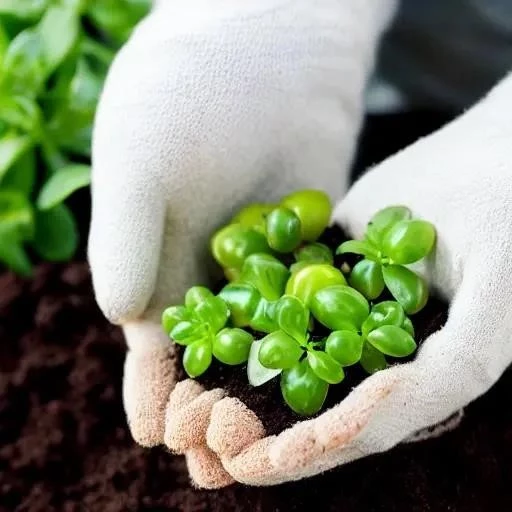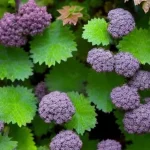As the last vestiges of winter’s chill recede, a palpable sense of anticipation permeates the air, signaling the grand arrival of spring․ For countless enthusiasts, this season is more than just a change in weather; it represents an extraordinary canvas, an invitation to rekindle a profound connection with the earth and breathe vibrant new life into their outdoor spaces․ While years may pass and trends may ebb and flow, the foundational wisdom underpinning successful gardening remains remarkably constant, echoing through the seasons like an enduring melody․
Indeed, even the invaluable gardening tips for spring 2015, initially shared with eager green thumbs nearly a decade ago, continue to offer an incredibly potent roadmap for cultivating a truly flourishing garden․ These aren’t mere historical footnotes; rather, they are timeless principles, meticulously crafted and proven through countless cycles of growth, promising a bountiful harvest and breathtaking blossoms for anyone willing to embrace their profound insights․ By integrating these foundational strategies, gardeners today can effortlessly transform their plots into verdant sanctuaries, irrespective of their experience level, ensuring a truly spectacular display․
Essential Spring Gardening Checklist (Timeless Wisdom)
While the year 2015 might seem distant, the core principles of spring gardening from that era remain universally applicable․ Here’s a concise overview of the fundamental tasks that continue to form the bedrock of a successful spring garden, easily adaptable for your WordPress site:
| Category | Key Action | Description | Reference/Benefit |
|---|---|---|---|
| Soil Preparation | Test and Amend Soil | Conduct a soil test to understand nutrient deficiencies and pH levels․ Amend with compost or organic matter to enrich structure and fertility․ | Essential for robust plant growth; improves drainage and aeration․ |
| Clean-Up & Pruning | Clear Debris & Prune | Remove dead leaves, fallen branches, and winter protection․ Prune dormant trees and shrubs to encourage healthy new growth․ | Prevents disease, promotes air circulation, shapes plants for optimal bloom․ |
| Planting | Start Seeds & Plant Cool-Season Crops | Begin sowing seeds indoors for later transplanting․ Direct-sow hardy cool-season vegetables (e․g․, lettuce, spinach, peas) and spring flowers outdoors․ | Extends growing season, provides early harvests, maximizes garden productivity․ |
| Weed Management | Early Weeding & Mulching | Address weeds proactively before they establish․ Apply a layer of organic mulch around plants to suppress weeds and retain soil moisture․ | Reduces competition for nutrients, conserves water, minimizes arduous labor․ |
| Tool Maintenance | Sharpen & Clean Tools | Inspect, clean, and sharpen all gardening tools․ Ensure irrigation systems are functioning correctly․ | Enhances efficiency, prolongs tool life, prevents spread of plant diseases․ |
For more detailed and evergreen gardening advice, consult reputable horticultural resources like the Royal Horticultural Society: www․rhs․org․uk
The Unseen Architect: Mastering Soil Health
At the heart of every magnificent garden lies the soil, a living, breathing ecosystem that acts as the very foundation for all growth․ Expert horticulturists, even back in 2015, consistently emphasized that investing in soil health is not merely a task but a profound investment in your garden’s future․ Think of your soil as the canvas upon which you’re painting your masterpiece; a rich, well-prepared canvas allows for the most vibrant and lasting colors․ By integrating insights from contemporary soil science with time-honored practices, gardeners can significantly enhance their results․ Conducting a simple soil test, readily available from local extension offices, provides invaluable data on pH levels and nutrient composition, guiding your amendments with precision․ Incorporating generous amounts of organic compost, lovingly crafted from kitchen scraps and yard waste, enriches the soil structure, improves drainage, and provides a slow-release buffet of essential nutrients for your burgeoning plants․ This foundational step, often overlooked in the rush to plant, is incredibly effective in ensuring vigorous, disease-resistant growth;
Strategic Planting: Nurturing New Life with Purpose
With the soil meticulously prepared, the next crucial step involves the thoughtful introduction of new life․ Spring is a pivotal moment for sowing seeds and transplanting young starts, a delicate dance between timing and intention․ The wisdom from 2015 highlighted the critical importance of selecting plants that are well-suited to your local climate and sun exposure, a principle that remains undeniably true․ Beginning seeds indoors, a practice cherished by many experienced gardeners, offers a distinct advantage, allowing tender seedlings to develop robust root systems before facing the unpredictable outdoor elements․ When transplanting, whether from pots or seed trays, doing so on a cool, overcast day or in the late afternoon minimizes transplant shock, giving your plants the best possible start․ Gently teasing apart any circling roots and settling the plant into its new home with a generous drink of water are small but remarkably effective gestures that ensure a smooth transition, setting the stage for abundant growth․
The Art of Hydration: Watering with Wisdom
Water, the elixir of life, demands a nuanced approach in the spring garden․ While the temptation might be to drench everything, especially after a dry spell, overwatering can be just as detrimental as underwatering․ The discerning gardener understands that consistent, deep watering encourages roots to grow downwards, seeking moisture, thereby building resilience against future droughts․ Surface-level sprinkling, conversely, fosters shallow root systems, leaving plants vulnerable․ By observing your plants closely and feeling the soil’s moisture content a few inches down, you develop an intuitive understanding of their specific needs․ Implementing efficient irrigation methods, such as drip lines or soaker hoses, delivers water directly to the root zone, minimizing evaporation and maximizing absorption․ This intelligent application of resources, a cornerstone of sustainable gardening since well before 2015, not only conserves precious water but also fosters healthier, more vibrant plant communities, preventing the conditions conducive to fungal diseases․
Vigilance and Vitality: Proactive Pest and Disease Management
A thriving garden is often the result of proactive vigilance against unwanted guests and ailments․ The spring of 2015, like every spring, brought its share of potential challenges, underscoring the timeless importance of early detection and intervention․ Instead of reacting with harsh chemicals, which can harm beneficial insects and the overall ecosystem, modern gardening increasingly champions organic and integrated pest management strategies․ Regularly inspecting your plants for unusual spots, chewed leaves, or the tell-tale signs of aphids or slugs allows for swift action before infestations spiral out of control․ Introducing beneficial insects, like ladybugs, or employing simple physical barriers can be incredibly effective․ Maintaining good garden hygiene—promptly removing diseased leaves or plant debris—significantly reduces the breeding grounds for pathogens․ This holistic approach, fostering a balanced ecosystem, ensures your garden remains a sanctuary for both plants and the beneficial creatures that help it flourish, embodying a forward-looking commitment to ecological harmony․
Embracing the Green Future
Ultimately, the enduring appeal of these 2015 spring gardening tips lies in their timeless practicality and their ability to empower gardeners to create spaces of profound beauty and productivity․ They remind us that while tools and technologies evolve, the fundamental principles of nurturing life remain constant․ By meticulously preparing the soil, planting with purpose, watering judiciously, and maintaining a watchful eye, you are not just tending a garden; you are cultivating a deeper connection with nature, fostering resilience, and contributing to a healthier planet․ As you embark on this rewarding journey, remember that every seed planted, every weed pulled, and every drop of water provided is a step towards a more beautiful, sustainable, and optimistic future, one garden at a time․ Embrace the wisdom, and watch your landscape truly bloom․






